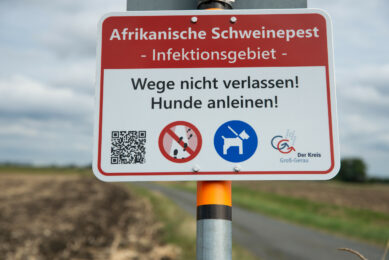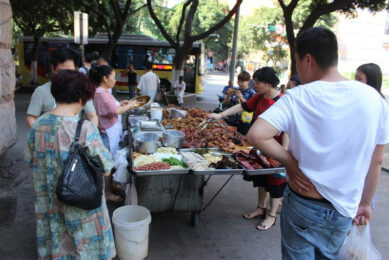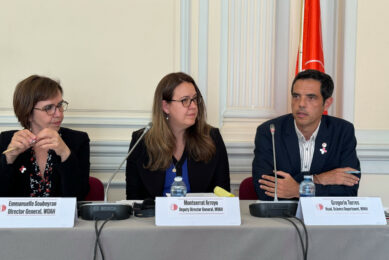Quarterly update: A tale of 2 viruses

It was impossible to foresee the effect of Covid-19 on the global economy and commodity prices earlier this year. This human virus has been even more disruptive than African Swine Fever, which was already having significant effects in the pig and pork markets in Asia. Pig market expert Dr John Strak shares a tale of 2 viruses in his quarterly update.
At the turn of this year it was reasonable to expect that the impact of the African Swine Fever virus in China and Asia on global pig and pork prices would be positive. A supply shock, all things being equal, should lead to price increases. And the supply shock in 2019 from ASF in China and other countries (like Vietnam), was huge. But all things did not remain equal.
A new virus entering the stage
Enter stage left, another virus with a part to play in the 2020 drama, Covid-19. In April, when I last wrote about the global market for pork for Pig Progress, I suggested that it was time for a reboot for the outlook for pig prices because of Covid-19. There were significant changes by then in the USA that affected the global picture.
Lockdown policies and the application of heath measures for workers in response to Covid-19 in the USA were affecting the demand for, and supply of pork in the USA. The virus had unforeseen impacts on meat plant workers and plant capacity, and on supplies at the factory gate. In April I noted that the global pig price and pork market was, “on the edge of a turning point”.
Major plants in Europe have been hit
In the last 3 months, as the spread of Covid-19 in the USA has worsened, that turning point has arrived. Further, some major meat plants in Europe have been hit by the spread of virus in their workforce, and this made it inevitable that the downward pressure on global pig prices would increase. Unless a vaccine “miracle” is found in the next few months we can expect low and lower prices for pigs in most major pigmeat exporting countries for the remainder of 2020. That is a complete reversal of the view expressed in January this year.
As far as pig prices are concerned – Covid-19 has trumped ASF.
My introduction is supported by various charts that follow and these are intended to help communicate my views on the outlook for the global pork market in 2020. Figure 1 illustrates the global pig price cycle since 2011. It shows the recent steep falls in US and Canadian hog prices and the delayed (but now equally steep) fall in EU prices. It also shows how the global pig price index is now in a downward phase of the cycle.
A recovery in global pig price index?
Recent and current pig prices in all the major exporter markets are so far below the trend line that it is very difficult to imagine a recovery in the global pig price index in 2020. The latest World Bank forecast underlines this: the Bank’s view is that the global economy is likely to shrink by around 5% in 2020. Even with a miracle vaccine, consumers will have less purchasing power this year and meat demand, and prices, will suffer.

In April I predicted that, “for US hog producers the rest of 2020 looks dire since they will be most affected by falls in domestic consumer incomes and Covid-19 impacts on worker availability”. Figures 2 and 3 illustrate how low prices have been in the USA in the last 3 months.
US exports to China have been strong
Although US pork exports have been strong (to China) and domestic demand has sporadically recovered (as lockdown policies varied from state to state) the problems caused by meat plant closures have been severe. There are now an estimated 2 million hogs backed up on US farms waiting for appointments at a slaughtering plant. While they wait prices remain depressed. In the USA the “ASF boom” has turned into a “Covid-19 bust”.


With regard to European producers I did not foresee in April that some major meat processors in Europe would have to shut their plants or reduce their capacity for extended periods. Back then I put my faith in European public health facilities as a safeguard against Covid-19 but in some countries (Germany in particular) it seems that the generally good public health conditions have been undermined by working or living conditions for employees that allowed the virus to spread.
Stricter rules for contract labour
The German government has subsequently introduced new stricter rules for contract labour used in meat plants in Germany. It may also be that the specific working environment of a meat plant (cold/high moisture levels) is conducive to virus spread even when all precautions are being taken. This is still being investigated. Whatever the cause, the damage has been done and pig prices in the Netherlands, Belgium and Germany fell sharply when meat plants servicing producers in these countries had to close as workers fell ill.
On the plus side there has been strong export demand for EU pigmeat from Asia and strengthening domestic demand as lockdown has eased, some holiday events have been reinstated/held, and tourists have begun returning to their holiday haunts. The supply side (from the factory gate onwards) now needs to catch up and it may be that pig prices in Europe will recover as meat plants come back on stream.
Backlog of pigs to deal with
As in the USA, however, there will be a backlog of pigs to deal with in Europe and that will depress prices. Europe’s pig prices have, on average, declined rapidly in the last 6 weeks (Figure 4).

In my last outlook commentary I noted that Chinese producers have a, ”rosy outlook as the Chinese herd rebuilds”. And that prediction seems to be holding true. Figures 5 and 6 illustrate the behaviour of China’s pig prices. Unsurprisingly, despite much work and investment to rebuild the Chinese herd, those pig prices have stayed high.
Too soon for supply response in China
It’s too soon to see a significant supply response in China (and the data may not be reliable enough even in a year’s time). In the first half of 2020 pigmeat production was down by almost 20% in China. Chinese consumers have had to accept that they will be living with relatively high pork prices for some time yet. The ASF-driven supply deficit in China and Asia will keep pig producers’ margins high for the foreseeable future.

The only variable in this “Asian scenario” is the behaviour of the Covid-19 virus – will the 1st wave have longstanding impacts on Chinese (Asian) economic growth? Will the virus return in China or other Asian countries with renewed vigour? These are not questions I can answer but they are risk factors and need to be noted. And let’s not forget ASF – if a vaccine (another miracle) is found for this virus it would transform the supply side for pork production.

Pig Progress experts talk
To read more Pig Progress expert opinions
List of risk factors
The list of risk factors doesn’t stop with the pig sector, of course. A poor grain harvest in the northern hemisphere in the months ahead will pile even more pressure on to pig producers who have had low prices and negative margins in 2020. A new strain of avian flu, on the other hand, could hit poultry supplies and thus drive pork prices up. We cannot predict how these “known unknowns” will behave but they are there as risks to be considered in the outlook for pig prices in the next 6 months. The only certainty is uncertainty.
As for Covid-19 it dominates the outlook because it affects the demand for pork and the supply of pig carcasses and primal cuts at the factory gate. If Covid-19 is beaten the outlook for pig prices would change – albeit to beat the virus will require a vaccine or inherent changes in virus transmission that are an aspiration rather than a realistic expectation in the remaining months of 2020.












